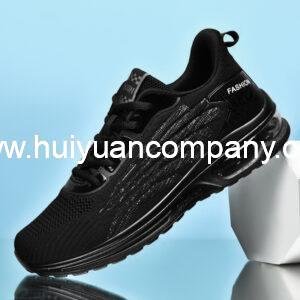Title: How to Choose the Best Sport Shoes for Your Feet: A Comprehensive Guide
Introduction
Choosing the right pair of sport shoes is crucial for optimal performance, injury prevention, and overall comfort during physical activities. With the myriad of options available in the market, selecting the best sport shoes for your feet can be a daunting task. This comprehensive guide will walk you through the essential factors to consider when purchasing sport shoes, ensuring that you make an informed decision tailored to your specific needs.
1. Understanding Your Foot Type
1.1. Pronation
Pronation is the natural rolling of the foot inward after it lands on the ground. It helps with shock absorption and propulsion. There are three types of pronation: neutral, overpronation, and underpronation.
1.2. Foot Arch
Foot arches play a significant role in determining the right shoe type. There are three types of foot arches: normal (medium), low (flat), and high arches.
1.3. Measuring Your Foot
Before purchasing sport shoes, measure your feet to determine your size. Keep in mind that feet can change over time, so it’s essential to measure them regularly.
2. Identifying Your Sport
Different sports require different types of shoes to provide the appropriate support, cushioning, and stability. For instance, running shoes are designed for forward movement, while basketball shoes offer more ankle support and lateral stability.
3. Key Features of Sport Shoes
3.1. Upper Material
The upper material of the shoe should be breathable and comfortable, allowing your feet to stay cool and dry during physical activities.
3.2. Midsole
The midsole is the layer between the insole and the outsole. It provides cushioning and support. Look for shoes with a responsive and shock-absorbent midsole material.
3.3. Outsole
The outsole is the bottom part of the shoe that comes in contact with the ground. It should offer good traction and durability, depending on the sport you’re involved in.
3.4. Insole
The insole should provide adequate cushioning and support. Removable insoles can be replaced with orthotic inserts if needed.
3.5. Heel Counter
A firm heel counter helps in stabilizing the heel and preventing excessive pronation or supination.
3.6. Lacing System
The lacing system should provide a secure fit without causing pressure points or discomfort.
4. Fitting the Shoes
4.1. Shop at the End of the Day
Feet tend to swell throughout the day, so it’s best to try on shoes in the evening or after a workout.
4.2. Wear the Right Socks
When trying on shoes, wear the same type of socks you’ll be using during your sport activities.
4.3. Check for Space
Ensure there’s enough room in the toe box to wiggle your toes comfortably. The heel should fit snugly, without any slipping.
4.4. Walk or Run in the Shoes
Before making a purchase, walk or run in the shoes to check for any discomfort or pressure points.
5. Additional Considerations
5.1. Budget
While it’s essential to invest in a good pair of sport shoes, it’s also crucial to stay within your budget. Look for sales, discounts, or second-hand options if needed.
5.2. Brand Reputation
Choose a reputable brand known for producing high-quality sport shoes. Reading reviews and ratings can help in making an informed decision.
5.3. Replacement Schedule
Sport shoes have a limited lifespan, typically between 300 and 500 miles of use. Keep track of your usage and replace your shoes when needed to maintain optimal performance and prevent injuries.
Conclusion
Choosing the best sport shoes for your feet requires careful consideration of various factors, including your foot type, sport, and specific shoe features. By following the guidelines outlined in this comprehensive guide, you can make an informed decision that will enhance your performance, prevent injuries, and ensure overall comfort during your physical activities.
